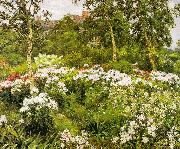Wholesale Oil Painting Reproductions No Minimum and Door to Door! |
|||||||||||
|
|
|||||||||||

|
|||||||||||
|
|
|
||||||||
All Gaines Ruger Donoho Oil Paintings |
||||||||
|
|
||||||||
|
|
||||||||
|
Artist Introduction: 1857-1916
Gaines Ruger Donoho Gallery |
||||||||
|
|
||||||||
|
A Garden Painting ID:: 3975 |
1911
Art Gallery of Ontario |
|||||||
Height Width |
INS/CM Quality |
|||||||
|
X |
| |||||||
|
|
||||||||
All Albert Joseph Moore Prints Oil Paintings |
||||||||
|
|
||||||||
|
|
||||||||
|
Artist Introduction: English Classicist Painter, 1841-1893
Albert Joseph Moore (4 September 1841 ?C 25 September 1893) was an English painter, known for his depictions of langorous female figures set against the luxury and decadence of the classical world.
SilverHe was born in York in 1841, the youngest of the fourteen children of the artist William Moore of York who in the first half of the 19th century enjoyed a considerable reputation in the North of England as a painter of portraits and landscape.
In his childhood Albert Moore showed an extraordinary love of art, and as he was encouraged in his tastes by his father and brothers, two of whom afterwards became famous as artists ?? John Collingham Moore and Henry Moore, and he was able to begin the active exercise of his profession at an unusually early age.
His first exhibited works were two drawings which he sent to the Royal Academy in 1857. A year later he became a student in the Royal Academy schools; but after working in them for a few months only he decided that he would be more profitably occupied in independent practice. During the period that extended from 1858 to 1870, though he produced and exhibited many pictures and drawings, he gave up much of his time to decorative work of various kinds, and painted, in 1863, a series of wall decorations at Coombe Abbey, the seat of the Earl of Craven; in 1865 and 1866 some elaborate compositions: The Last Supper and The Feeding of the Five Thousand on the chancel walls of the church of St. Alban's, Rochdale; and in 1868 A Greek Play, an important panel in tempera for the proscenium of the Queen's Theatre in Long Acre.
His first large canvas, Elijah's Sacrifice, was completed during a stay of some five months in Rome at the beginning of 1863, and appeared at the Academy in 1865. A still larger picture, The Shunamite relating the Glories of King Solomon to her Maidens, was exhibited in 1866, and with it two smaller works, Apricots and Pomegranates. In these Albert Moore asserted plainly the particular technical conviction that for the rest of his life governed the whole of his practice, and with them he first took his place definitely among the most original of British painters. |
||||||||
|
|
||||||||
|
|
A Garden Painting ID:: 90379 |
1869(1869)
Medium oil on canvas
Dimensions Height: 1,746 cm (687.4 in). Width: 879 cm (346.1 in).
cjr |
||||||
Height Width |
INS/CM Quality |
|||||||
|
X |
| |||||||
|
|
||||||||
|
Prev Next
|
||||||||
|
|
||||||||
|
Related Paintings to Albert Joseph Moore Prints :. |
||||||||
|
|
||||||||
|
CONTACT US |


